The 22nd Japan Media Arts Festival Exhibition of Award-winning Works was held from June 1 to June 16 in and around Miraikan (the National Museum of Emerging Science and Innovation), and at Fuji Television Wangan Studio. Prior to the exhibition’s official opening, a press preview took place on Friday May 31, with a number of award-winning artists attending. This article reports on the portion of the exhibition held at the Fuji Television Wangan Studio based on the comments of the award-winning artists.
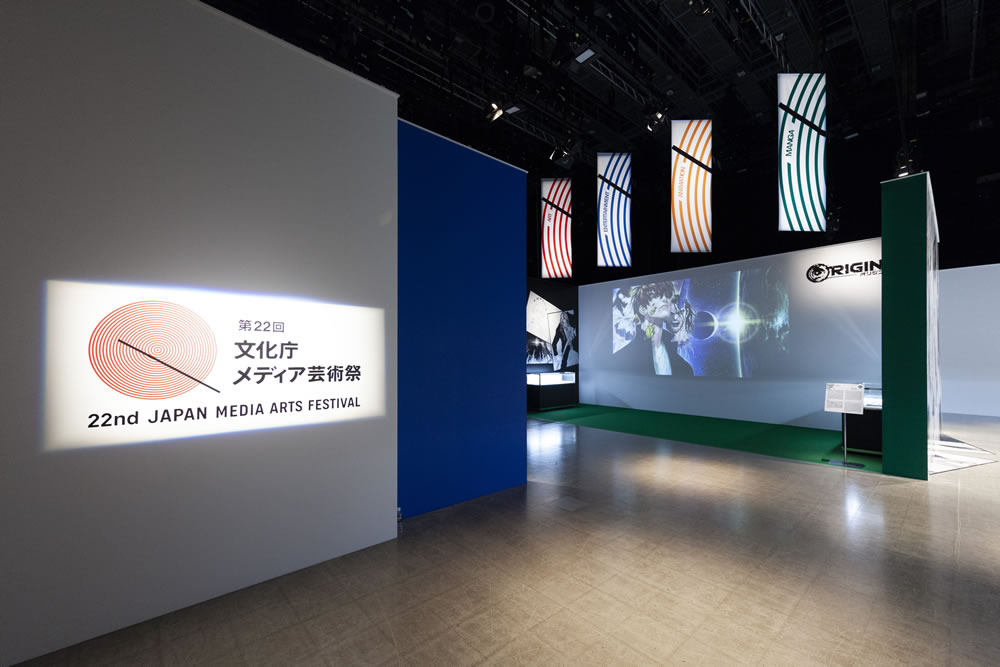 At Fuji Television Wangan Studio, four works from the Art Division, eight from the Entertainment Division (three of which were exhibited at the Miraikan), one from the Animation Division and five from the Manga Division were exhibited.
At Fuji Television Wangan Studio, four works from the Art Division, eight from the Entertainment Division (three of which were exhibited at the Miraikan), one from the Animation Division and five from the Manga Division were exhibited.
Photo: Shu Nakagawa
Works consciously using colors stand out in the Art Division
The Fuji Television Wangan Studio consists of a multipurpose hall and the M1 studio. Four works were exhibited in the hall and 14 in the studio. At the entrance, SPARE (not mine), an interactive work by Jonathan Fletcher Moore, which won the New Face Award in the Art Division, welcomed visitors. One car tire was placed in front of a white wall, with traces of the tire hitting the wall. Using the tire, which had been discarded on a Los Angeles road, this artist tried to explore the use of AI and the rise of automation in the automobile industry, and their effect on human life.
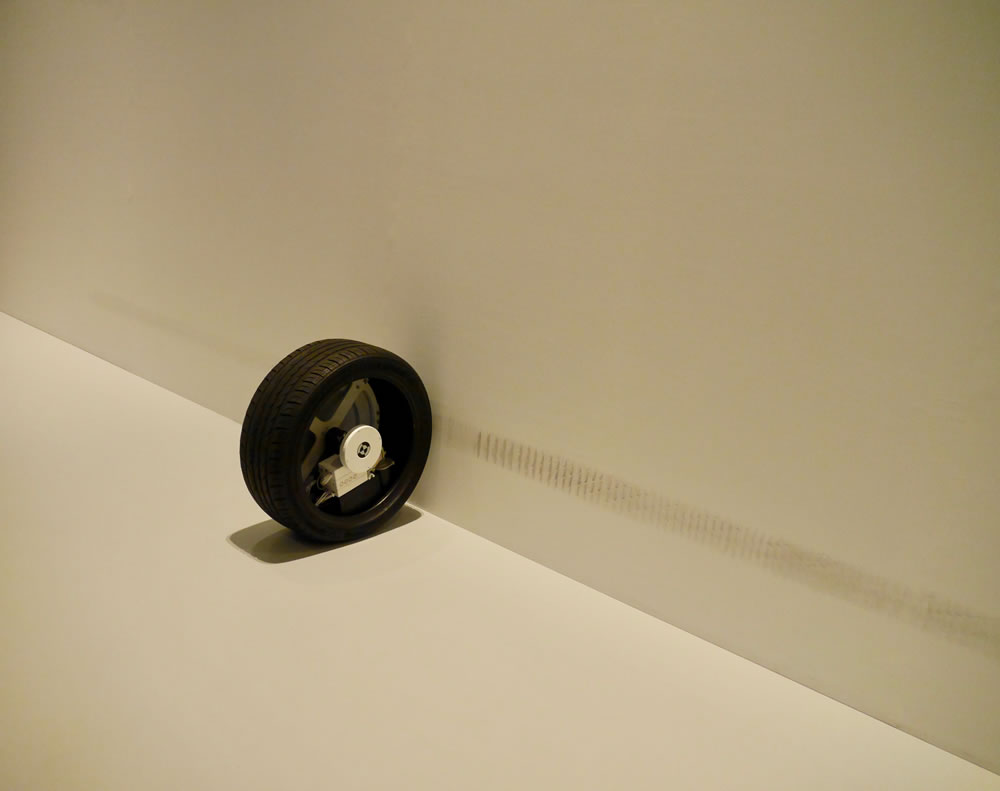 Jonathan Fletcher Moore’s SPARE (not mine)
Jonathan Fletcher Moore’s SPARE (not mine)
A single tire standing out against the background of white wall
© 2018 Jonathan Fletcher Moore
Total Tolstoy, a media installation by Andrey Chugunov, which won the New Face Award, was on display at the M1 Studio. This was a roughly 11-minute work of color and voice that presented Leo Tolstoy, Russia’s great literary figure. Chugunov created this work based on a diary written by Tolstoy, after he was excommunicated from the Orthodox Church, over 10 years until his death.
Another media installation entitled “datum,” created by Norimichi Hirakawa, which won the Excellence Award, presented pioneering video work utilizing symmetric handling of space, color and time in high-dimensional space. This work is inspired by the word “dimension,” which he encountered in his dialogues with researchers.
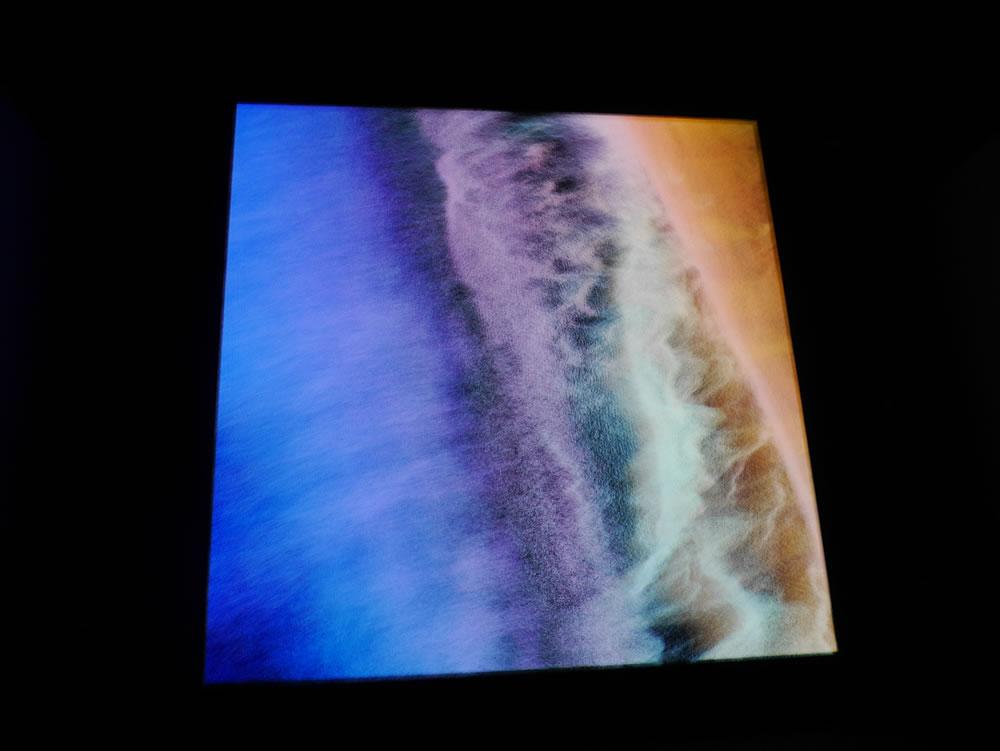 datum by Norimichi Hirakawa
datum by Norimichi Hirakawa
datum uses time-lapse imagery obtained from near the ALMA telescope in Chile’s Atacama Desert
A rich variety of works from interactive video games to music videos shown in the Entertainment Division
In the multipurpose hall, KABUKI-CHO DETECTIVE SEVEN, an experience-based game created by TEAM DETECTIVE 7 (Takao Kato, Takumi Nishizawa, Masataka Hirai, Nobu Horita and Tatsuru Iwamoto), which won the Excellence Award in the Entertainment Division, was introduced along with character-setting panels and a bar-setting stage. Players of this work try to solve cases and “become the seventh detective at the Seven Detectives Agency,” walking through the real district of Kabuki-cho in Tokyo’s Shinjuku.
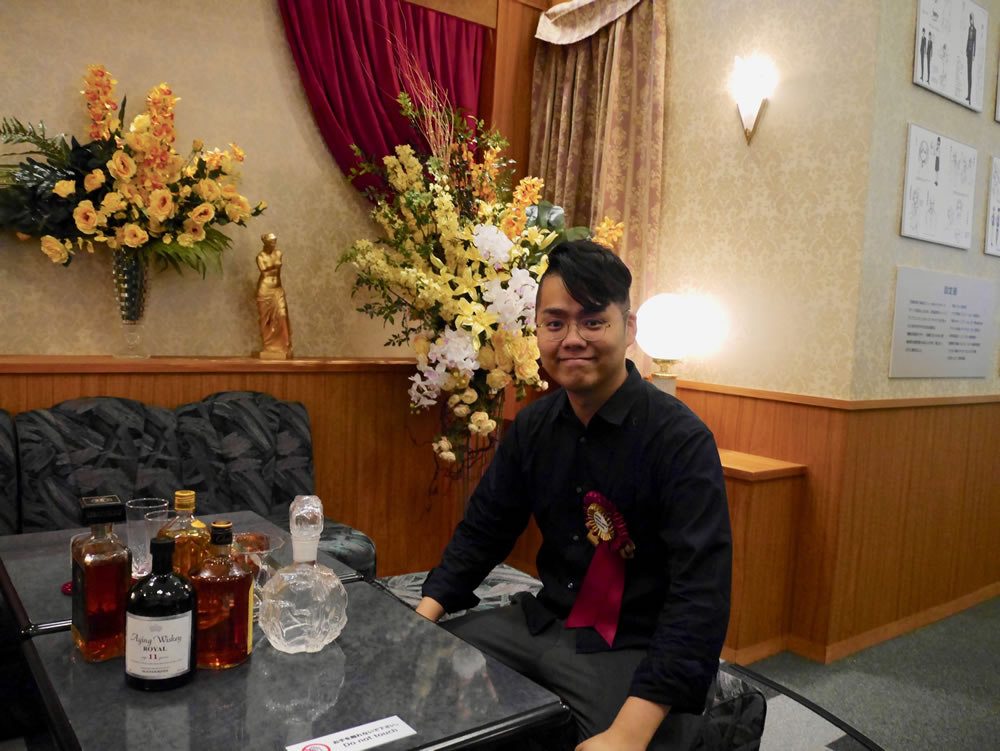 Nishizawa, a member of the production team. During the exhibition period, this work offered players the chance to solve a case in which Chico is missing on the stages of the two exhibition venues.
Nishizawa, a member of the production team. During the exhibition period, this work offered players the chance to solve a case in which Chico is missing on the stages of the two exhibition venues.
© SCRAP
Visitors going further along the exhibition venue would find Pixel Ripped 1989, a video game. This work, created by Ana Ribeiro, Carlo Caputo, Julia Lemos, Leonardo Batelli and William Rodriguez, won the New Face Award. It offers an adventure played on the 8-bit video game within a VR game.
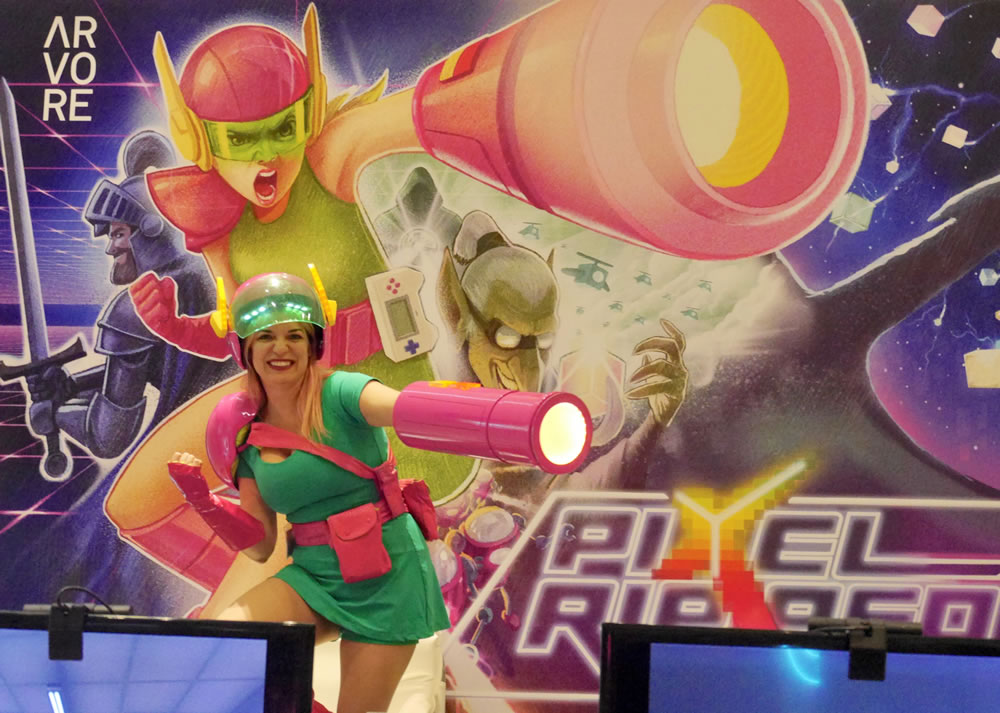 A cos-player based on a game character welcomed visitors at the preview.
A cos-player based on a game character welcomed visitors at the preview.
© ARVORE Immersive Experiences
Beside the Pixel Ripped 1989 was TikTok, an Excellence Award winner. Among the works on display in the M1 studio were LINNÉ LENS, another Excellence Award winner, and Chico Will Scold You! the Grand Prize winner. These three were also presented at the Miraikan. Please refer to the report (1) for further details.
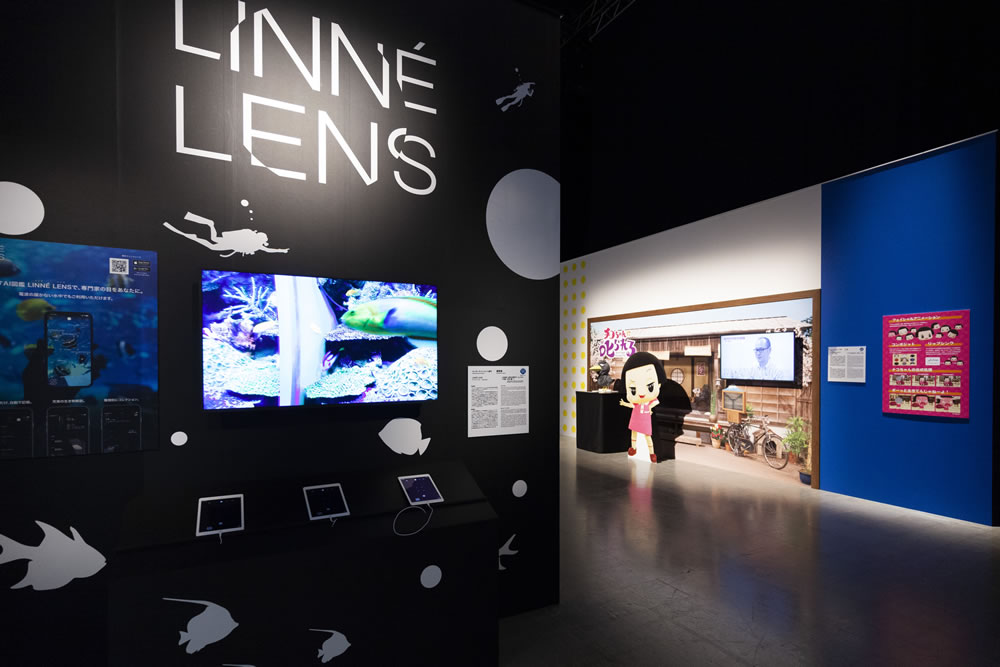 LINNÉ LENS by LINNÉ LENS Production Team (Kenichi Sugimoto, Representative) / Chico Will Scold You! by Chico Will Scold You! Production Team
LINNÉ LENS by LINNÉ LENS Production Team (Kenichi Sugimoto, Representative) / Chico Will Scold You! by Chico Will Scold You! Production Team
In addition to Chico, the crow named “Kyoe” looked on.
© NHK (Japan Broadcasting Corporation) All rights reserved.
Photo: Shu Nakagawa
Two works that won the New Face Awards in the Entertainment Division were also on display in the M1 studio. WEDNESDAY CAMPANELLA “The Bamboo Princess” produced by Kento Yamada, Director, and his production team, and Spring, a video by Ayumi Omori. Wednesday Campanella’s video earned the prize for going beyond the scope of a music video to become a powerful piece that is closer to being an art film. In the exhibition booth, music videos and costumes that were utilized in the videos were also showcased. Spring is a short film portraying a female art-school student who is forced to care for her grandfather who gradually reverts to his childhood as his dementia progresses. This film depicted issues of contemporary Japan in muted tones.
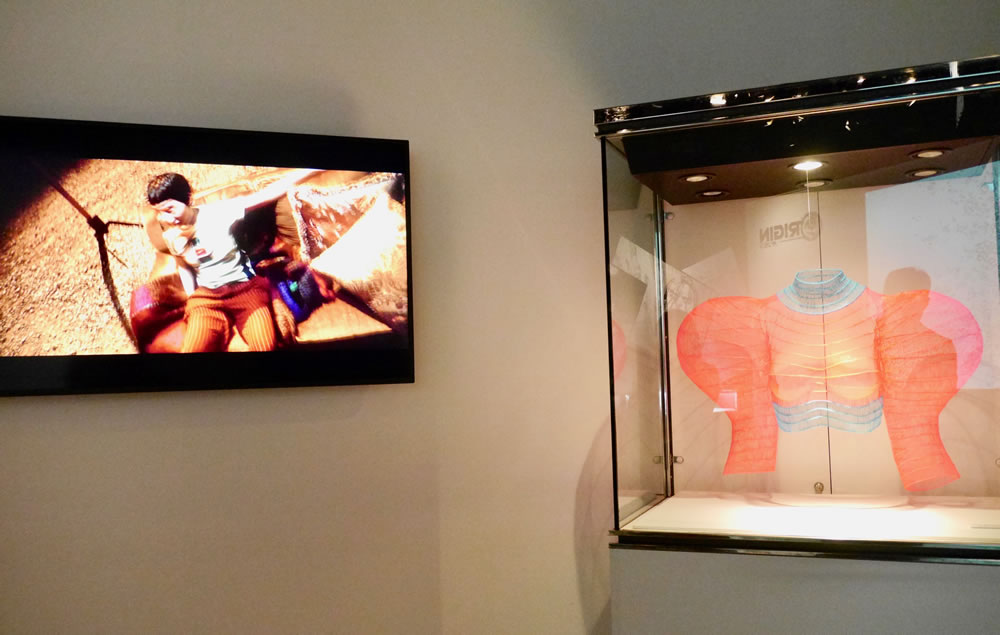 WEDNESDAY CAMPANELLA “TheBambooPrincess” by WEDNESDAY CAMPANELLA “Bamboo Princess” Production Team (YAMADA Kento, Director)
WEDNESDAY CAMPANELLA “TheBambooPrincess” by WEDNESDAY CAMPANELLA “Bamboo Princess” Production Team (YAMADA Kento, Director)
In addition to the films, a dimensional costume piece made with a 3D pen by Seiran Tsuno, which the vocalist KOM_I put on in the video, was showcased.
Work combining performance with technology won two awards at the same time for the first time
Located at the exhibition site were the Art Division’s Excellence Award winner, discrete figures, a dance installation by Daito Manabe, Motoi Ishibashi, MIKIKO and ELEVENPLAY; and a performance booth for Perfume × Technology presents “Reframe” by MIKIKO (representative), Daito Manabe and Motoi Ishibashi, the Entertainment Division’s Excellence Award winner. It was first time that a single group of artists won two awards from two different divisions since the Japan Media Art Festival started in 1997. Both works combined dance performance with technology. On the front stage, a video portraying dance scenes are projected, while a small display beside the stage indicates technical details. Visitors can examine these mechanisms. For discrete figures, Manabe (a member of Rhizomatiks), who has been creating numerous projects using technology, said, “This can be made now as we can collect data much easier than before.”
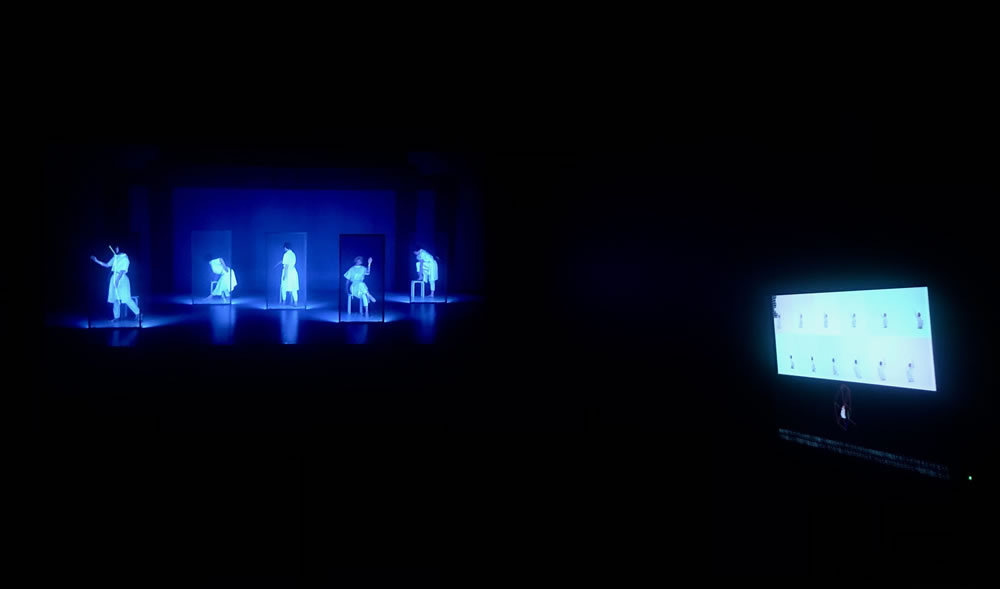 discrete figures
discrete figures
Daito Manabe / Motoi Ishibashi / MIKIKO / ELEVENPLAY
Footage similar to dancers’ poses are projected onto a frame on the stage
© Rhizomatiks / ELEVENPLAY
A French short animation won the Grand Prize in the Animation Division
Only one work from the Animation Division was exhibited at the Wangan Studio. La Chute is the Grand Prize winning animated short film by Boris Labbé. It is a roughly 14-minute animated short film inspired by Dante Alighieri’s Divine Comedy Inferno. Indian ink and water colors are digitally edited and overlaid by original music of string orchestra fragments and electronics. A unique world view produced by repetitive expressions throughout the piece was appraised.
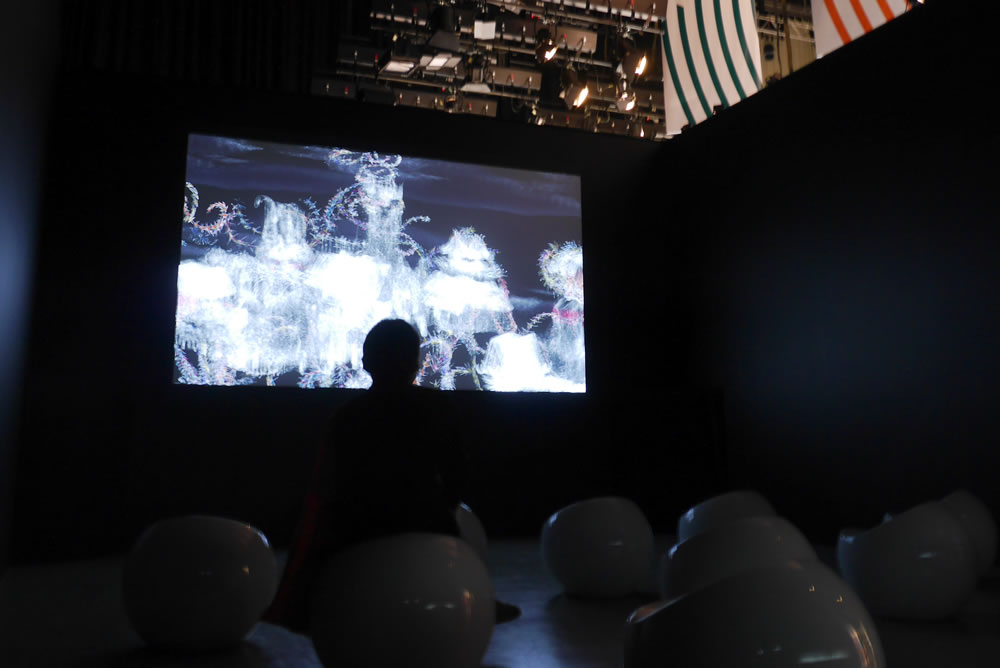 La Chute by Boris Labbé
La Chute by Boris Labbé
Visitors can sit and enjoy the film. The highlight was that the animation unfolded to the accompaniment of high-volume music.
© Sacrebleu Productions
A wide variety of genres from science fiction to “boy’s love” were featured in the Manga Division
Last but not least was Boichi’s ORIGIN, which won the Grand Prize in Manga Division, and was exhibited farther along in the M1 Studio in the multipurpose hall. Set in 2048 Tokyo, this story depicts the battle of humanoid ultrahigh performance AI robots that repeatedly kill people and “Origin,” a robot prototype integrated into human society. This work was acclaimed for its graphics that precisely depict the characters, story building as science fiction, its indescribable humorousness in parts, and exceptional quality of the work as manga.
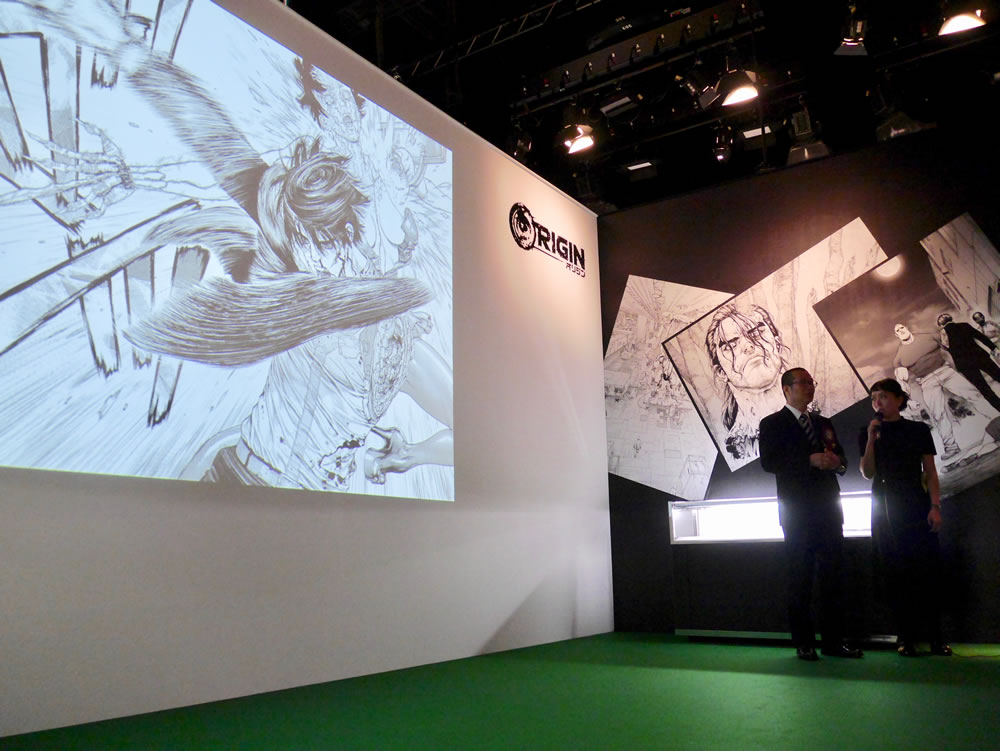 ORIGIN by Boichi
ORIGIN by Boichi
As enlarged frames of manga were on the wall, visitors can examine details of the work. Boichi appeared at the exhibition site.
© boichi, Kodansha 2019
Illustration panels, original drawings and materials used for their production and documents were exhibited in the booths of four Excellence Award winners.
Space battleship Tiramisu, by original author Satoshi Miyagawa and art by Kei Ito, is a gag-comedy depicting events on Tiramisu, a state-of-the-art military spaceship, in a science-fiction setting of heated battles between the Earth Federation and space migrants. This work was introduced along with its TV animation, which was adapted in 2018.
Nagi’s Long Vacation by Misato Konari is the story of a 28-year-old office clerk who has spent her life being vigilant about the moods of people around her, as she embarks on a job-free life. It depicts people’s feelings in Japanese society today in a serious manner.
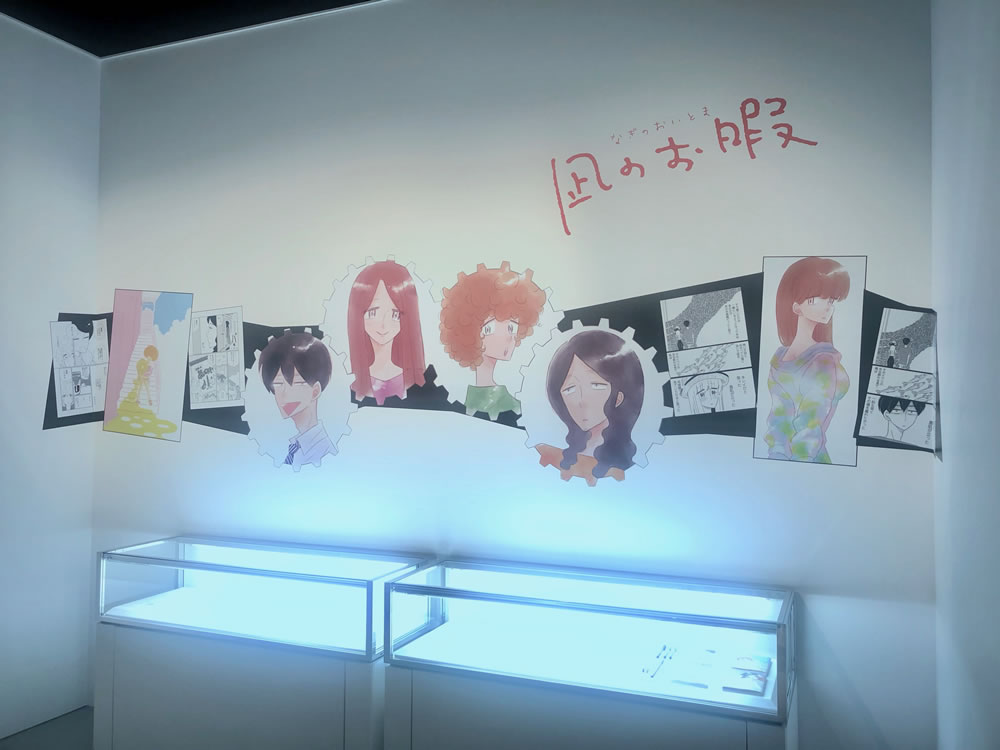 Nagi’s Long Vacation by Misato Konari
Nagi’s Long Vacation by Misato Konari
A booth of Nagi’s Long Vacation. Line drawings, materials used for production and books were displayed in the glass case.
© AKITASHOTEN
Sawa Sakura’s MOMO & MANJI is the first attempt at “boy’s love” by the author, who is familiar with Edo culture. Along with the original drawings and layout works, books on Edo that she referred to for her creation and a replica of inro medicine cases were also on display. Nazuna Saito’s To dusk is the first book in 20 years to come from a manga artist aged over 70. Based on her own experience, she tackles the theme of caring and solitary death, and sublimating the story with humor, earning her the award.
At the exhibition, 32 award-winning works of the Japan Media Arts Festival were available at one time. Also held were talk events featuring award winners and a symposium with invited guests, such cooperative projects including “MUTEK.JP” and “Tokyo 2020 Nippon Festival.” The exhibition provided a great opportunity to enjoy “Media Arts,” which were gathered not only from Japan, but from around the world, through various angles.
(information)
22nd Japan Media Arts Festival Exhibition of Award-winning Works
Period: Saturday, June 1-Sunday, June 16, 2019 (Closed Tuesday, June 4 and 11)
Opening Time: 10:00 a.m.-5:00 p.m.
Venues: Miraikan-The National Museum of Emerging Science and Innovation, Fuji Television Wangan Studio, Tokyo International Exchange Center, BMW Group Tokyo Bay, Symbol Promenade Park and other locations
Admission: Free
Organizer: 22nd Japan Media Arts Festival Executive Committee
https://j-mediaarts.jp/en/
*URL link confirmed on May 23, 2020.
| ◀ Part 1 |











